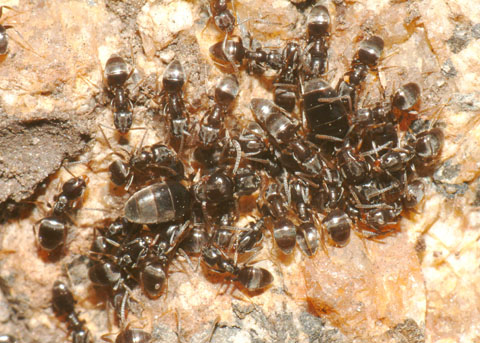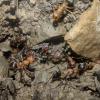- Formiculture.com
- Forums
- Gallery
- Members
- Member Map
- Chat

Do Camponotus and other ants eat/destroy wooden homes?
Started By
Chall
, Jul 2 2023 2:41 PM
3 replies to this topic
#1
 Offline
-
Posted July 2 2023 - 2:41 PM
Offline
-
Posted July 2 2023 - 2:41 PM
My friend is very afraid of getting ants as he is worried about the foundation of his home and all that (lives in a mostly wooden home) is this a valid fear? I was always told they only eat rotting wood.. please let me know (:

#2
 Offline
-
Posted July 2 2023 - 2:43 PM
Offline
-
Posted July 2 2023 - 2:43 PM
I might add I find different sources saying different things many peat companies say they destroy homes while other less bias parties say they don’t eat wood at all and just take over old termite tunnels. All very conflicting and confusing…

#3
 Offline
-
Posted July 2 2023 - 3:00 PM
Offline
-
Posted July 2 2023 - 3:00 PM
Only some Camponotus speices nest in wood and wood with high water damage at that. Other speices may eat food left in your house but I have tapinoma in my house and they don't do much. It is very unlikely for them to escape.
- futurebird likes this
#4
 Offline
-
Posted July 2 2023 - 4:45 PM
Offline
-
Posted July 2 2023 - 4:45 PM
The only ants that will chew parts of a wooden house are the larger Camponotus species. Their majors are just robust enough to work softer wood. They are so ineffective against healthy wood that many keepers keep these ants in wooden nests. Camponotus pennalyvanicus is the most potentially destructive. These are just about the largest ants you will see in the US near a home. Big, black.
I keep them as pets in a hardwood nest and they have not been able to alter it for two years. They can chew: leaves, rotten wood, bone, cork, drywall.
If you see Camponotus pennalyvanicus in your home they are probably there to stay warm and drink your fresh water more than chewing wood. They do not eat wood like termites and only will chew it to make a home, in nature they hollow out the rotten portions of living or dead trees to make their homes. When you see them inside follow them and try to find out where they are caping out. Sometimes simply sealing holes can solve the problem. Other times it may be a warning that part of your wooden home has water damage!
The nests found in houses are often "satellite nests" these are nests with a few 100 workers and some brood-- but no queen. The queen is likely in a nearby forest or wood pile, deep in a log with 1000s of her daughters. The interlopers are in your house because it's warm. Because they have found clean water to drink (check for leaking pipes!) and they don't mind your food scraps or eating other insect pests like house spiders, carpet beetles, roaches, etc.
Make it dry and cold inside, seal their entrances and exits and clean up the goodies and they will decide that hanging out in the woodpile makes more sense.
The ants in your photo will not chew wood at all. They just don't have the jaws for the task!
Starting this July I'm posting videos of my ants every week on youTube.
I like to make relaxing videos that capture the joy of watching ants.
If that sounds like your kind of thing... follow me >here<.
1 user(s) are reading this topic
0 members, 1 guests, 0 anonymous users
















